Art Business Guidelines
- Get link
- X
- Other Apps
Before Starting an Art Business
What you need to know to begin
What do you need to know before starting a business?
One of the very first steps to make a living from your art is to build a business. I know that most artisans only need to hear the word business, let alone the sound of a plan to create an urge to withdraw. Of all things I ever arranged for my art career was to create a business plan. Although this one step I hated the most turned into the most satisfying, clarifying and important step I ever took. I had not a bone of business in my system, hence depended with every step on other people. But once I took things into my own hands, I never looked back. What I once could not stand, became natural and easy with time. It is a great feeling to know what you are doing because it creates independence and gives you clarity. You will be going on a journey that will require some time, the best business plans are taking at least half a year, if not longer. | The times I have heard emerging artists say when attending my business seminars, that all they wanted was to paint and don't have the time nor the desire to learn business is heart-wrenching to me. I try to remind them that they still, after years of dreaming about an art career, remain stuck within a job they don't like to make an income, without ever getting any closer to making a living from their art. It therefore makes sense and is far better to allocate a small period of time and invest it in business planning than not moving forward at all. These are the steps you need to take before even thinking of going into business. The idea is to work on a plan for a few months, to give you time to think and collect ideas. When going through the steps below you likely will find aspects of it where you are a total loss. See each step as gain when accomplished and knowledge that stays with you. Make the commitment to take half a year of your life to learn those uninspiring skills of business and find out who you are in this market and who your clients are. It will be all worth it! |
Executive Summary | A brief of your business and who you are. The timeline for planning your future is a plan that overseas the next three to five years and includes how you expect to generate revenue. You need to include your goals, mission statement, products, and services. If you are just starting focus on your background and experience. If any of the books stands out as a most helpful resource it would be the publications "What's My Plan?"from the Australia Council for the Arts and "The Code of Practice" from NAVA. |
Business Description | Describe what is different about your artwork versus others. If you don't know, do some research and try to express the difference in words. Discuss your market and your target groups. For example, do you want to become known as an exhibiting artist, or rather use the merchandise market? You will find the right questions and answers in the book "What's My Plan". |
Market | This involves pulling up demographics for the area you will be serving. Learn what comprises the population of the area you will be serving, such as income, age, education. I know that some of the steps seem awkward to you, but believe me when I say that with every step, I learned something new about the art sector. You will find information for Australia at the Australian Bureau of Statistics. If you are from another country find out where your country keeps such information. |
Business Management | Decide how you are going to structure your management. Will you be a sole proprietor, an LLC, a corporation, a partnership? Information regarding business structures are found at business.gov.au. |
Your | What is your type of style or product? Explain your product and/or service and what is different about your art or even an advantage over your competitors. Create a written statement. If you have no idea where to start with this question "What's my Plan" once again is the best book to work through. It was specifically written for artists. |
Marketing | You need to figure out how you are going to get the message out to your target groups. Basically, what is the strategy you are going to use? For more information go to Arts Marketing. |
Funding | Are you going to look for funding? If so, then discuss how or who you will be using. The business plan is critical if you decide to look for an investor or grant money. NAVA is a great source for grant applications. Then there are Regional grants and the Australia Council. I always got in contact with my local arts development officer. There are there to help you out. Talk to them what is available to you in terms of funding and grants. |
Branding | Both are very important. The home page of your website or your name can be your brand. Keep in mind that your brand is the promise you make to your customer. If it is your name, make it stand out - create something catchy. However, don't forget the logo since this creates a visual or image for the customer. The logo represents your business so make it count. Apple is a brand, and their bitten apple is their logo. Think about how that name and logo affects you. If you are not a designer you can go to local colleges and ask if any of their students would like to create a logo for you for a small fee. |
Bookkeeping, | Starting a new business is exciting and overwhelming so consider an accounting service, which is a group of experts who can save you time, money, and worry. A good accountant can provide you with some great business tips to improve cost efficiency and save on taxes. There are some great programs around you can use, who combine an art inventory of your work, invoicing and bookkeeping in one. More in my "Organise your Art Business" article. Use an easy invoice system like invoice2go or Wave. The Wave app is for free. I used it for years with my students when conducting art classes. How to Earn from Your Drawings or PaintingsA sketch is just a Mini MovieAt the beginning of an arts career you might not be fully aware of all the interesting jobs available that are out there. Here are some ways you can earn a respectable living as a talented sketch artist. Some of these jobs are full-time with benefits. However even if you prefer to freelance, paying work might be available where you weren't expecting it. Sketch artists can earn a sizeable income with advance planning and a good dose of talent. Drawing skills are in demand and some of these fields offer excellent compensation. Be open to the possibilities around you. WORK OPTIONS FOR ARTISTS
Pricing Your ArtworkWhat every artist should know before putting a price tag on their workThe pricing of artwork is always a delicate matter for most emerging artists. But when art is your business and income, it should be an important consideration. Knowing what to charge could potentially mean the difference between success or failure of your art business. As it is not an easy task get an overview of the common standard hourly rate for artists in Australia, I have included the common rates for Australian Artists Fees & Wages from the publication "The Code of Practice" by the "National Association For the Visual Arts". Your Reasons |
Never Stumble when telling your price, “but be confident in asking what is reasonable for the work you do. |
I was intimidated when asking even for a fair amount of money when I entered this profession and almost felt guilty to receive what would have been justifiable. Only when I learned what my collegues in the industry were asking for their services did I realise that I was by far underselling my work. It seems my clients could smell that I was uneasy, hence doubted my pricing as much as I did. The moment I asked for fair prices believing that it was my right and fair, clients seem to have less problems with my price structure and I made more money not less, although being more costly.
It is important that you think your whole situation through. Just to give you an example. If you undertake to sell an artwork for $100 instead of its real worth, let’s say a $1000, you probably do this because you are convinced that no one will buy your work for the higher price. You feel pressured, because you spend on materials, but money never comes back to you.
There is something substantially wrong with this thinking, as was mine those many years ago. Because when selling an artwork for a thousand dollars instead of a hundred dollars, we can actually loose 9 clients AND SAVE an enormous amount of time, because we won't need to produce 9 more works to get to the same result. To sell it under price is crazy and doesn't make sense. Today I rather invest my time in learning a bit of marketing and consult with art organisations rather than underselling my work to a pitiful degree.
I had to learn to understand why I have a right for a minimum hourly rate especially when working on commissions and have listed those reasons for you personally and for the education of your clients to understand why you should ask for a reasonable and fair pay:
It is important that you think your whole situation through. Just to give you an example. If you undertake to sell an artwork for $100 instead of its real worth, let’s say a $1000, you probably do this because you are convinced that no one will buy your work for the higher price. You feel pressured, because you spend on materials, but money never comes back to you.
There is something substantially wrong with this thinking, as was mine those many years ago. Because when selling an artwork for a thousand dollars instead of a hundred dollars, we can actually loose 9 clients AND SAVE an enormous amount of time, because we won't need to produce 9 more works to get to the same result. To sell it under price is crazy and doesn't make sense. Today I rather invest my time in learning a bit of marketing and consult with art organisations rather than underselling my work to a pitiful degree.
I had to learn to understand why I have a right for a minimum hourly rate especially when working on commissions and have listed those reasons for you personally and for the education of your clients to understand why you should ask for a reasonable and fair pay:
1. INSURANCE As a professional freelance artist you may need the following insurances: public liability, transit of artwork, damage to artwork, studio content, fire and theft to protect your studio and accident or loss of income insurance, because when you are sick, you aren't getting paid. 2. SUPERANNUATION To freelance means taking care of your own superannuation, so the usual 9% rate of pay has to be factored into your pricing. 3. WORKERS COMPENSATIONS As a freelancer you are not covered under the workers compensation act, and whatever happens to you is your own responsibility. 4. ARTS EDUCATION & TRAINING Many artist have put time, effort and money into some form of arts education and some will invest in further education along the way. Your skills have come from an investment you've made, while some of you were studying (full-time or part-time) and otherwise spend time to learn your craft, when you could have made an income within this time. 5. NO PAY WHEN SICK The usual benefit of paid leave, paid sick days or long service is another reason for fair pay and needs to be incorporated into your budget. 6. HOLIDAYS Like every working person, you as a self-employed artist have a right for a yearly holiday. This is as important to you as for your customer, as you have to remember how much a relaxed holiday can recharge an artists creativity. And a well-run business takes this into account. 7. LEGAL CONTRACTS Contracts or legal advice cost money. Even if you purchase certain contracts inexpensively from the Arts Law Centre, you still paid for them. 8. MARKETING You should spend to some extent on marketing. Always! And if it is only through public relations in form of presenting yourself to potential clients and whether successful or not, even networking takes valuable time. 9. PORTFOLIO Being in business requires to present your artwork in a professional manner, whether in form of photographs, prints, copies or online presentation. To create a professional portfolio can be expensive. 10. STUDIO RENT Whether you have a separate commercial studio or work from home, it is space you pay for. 11. ART MATERIALS Unarguable artists do have a lot of expenses for art materials. Just think of what you have spent over the years for your trials and errors to experiment. 12. WEBSITE Every artist needs a website these days and it cost money and time to keep it updated and moving and alive. |
Pricing
101
Price your artwork well with thought
and common sense.
and common sense.
If you work on a commission, the norm is to price your artwork on an hourly-rate plus materials basis. However, remember that commission-based work is priced differently from gallery exhibits, which again are priced independently from licensing arrangements.
Here are some points to consider when deciding what to charge for artwork offered to your clients:
Here are some points to consider when deciding what to charge for artwork offered to your clients:
|
The Ultimate
Artwork Pricing Resource
Whether you wish to learn how to price your commissions
or what to charge for artworks based on a licensing arrangement;
or what to charge for artworks based on a licensing arrangement;
The Code of Conduct available at NAVA is a remarkable resource that every Australian art business owner should be familiar with. Plenty of information with valuable tables for all different types of pricing within the arts sector, be it for employment or freelancing situations :
|
As an art business owner, you may also want to consider a paid membership at the NAVA. You could learn a lot about how to price your artwork, and other topics relevant to art business owners, from your peers at the Association.
- Get link
- X
- Other Apps




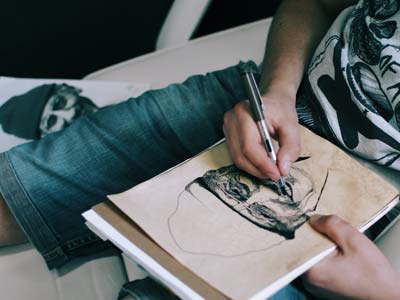
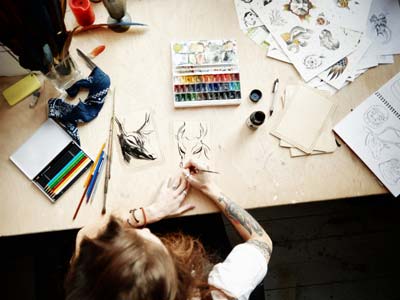
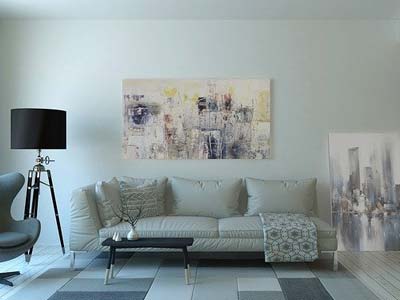






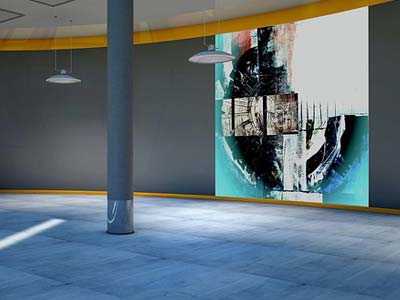



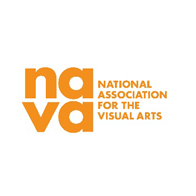
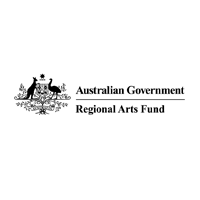
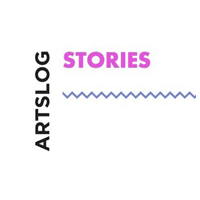
Comments
Post a Comment